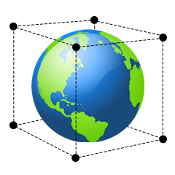Today, people simultaneously use three cultural codes:
• The civilization of books (the Bible, the Koran, the Upanishads, etc.) is a linear code that provides detailed knowledge and is presumed to be rational.
• The civilization of the image (e.g. Netflix): the image is a space-time code that offers people a vision of the real or virtual via three types of screens: the TV, the computer and the mobile device.
• Civilization data (at Google): Data is an interactive digital code that gives the user the choice of media coverage, filtering or distributing its content in networks from the Cloud.
| Industrial Information | = | Postindustrial information |
| Mediated by professionals | = | Self-mediated by citizens |
| Scarcity of information | = | Big data |
| Static document | = | Hyperlink |
| Data processing | = | Knowledge Processing |
| Reported info | = | Opinion |
[expand title=”Landmarks”]
– 1750 Code of Hammurabi.
– 1200 Moses and Monotheism.
– 594 The beginning of Greek democracy.
– 526 Enlightenment of Gautama Buddha.
– 470 The Analects of Confucius.
1 The teaching of Jesus Christ.
622 Muhammad and the beginning of the Hegira.
1088 The first university in Bologna.
1440 The printing press (Gutenberg)
1517 Martin Luther and the Reformation.
1789 The French Revolution.
1950 The era of mass media
2001 The terrorist attacks of September 11.[/expand]
Other transitions :
The evolution of the information file
From 1960 on, we began to rely less and less on paper as the primary support for digital files. The content, whether data or metadata, text, sounds, images or patterns, services or applications became more complex with each new societal era. Each time, a new algorithmic layer is added to the file (see below) – a layer of « intelligence » that provides users with new areas of connectivity :
Today, people simultaneously use three cultural codes:
• The civilization of books (the Bible, the Koran, the Upanishads, etc.) is a linear code that provides detailed knowledge and is presumed to be rational.
• The civilization of the image (e.g. Netflix): the image is a space-time code that offers people a vision of the real or virtual via three types of screens: the TV, the computer and the mobile device.
• Civilization data (at Google): Data is an interactive digital code that gives the user the choice of media coverage, filtering or distributing its content in networks from the Cloud.
| Industrial Information | = | Postindustrial information |
| Mediated by professionals | = | Self-mediated by citizens |
| Scarcity of information | = | Big data |
| Static document | = | Hyperlink |
| Data processing | = | Knowledge Processing |
| Reported info | = | Opinion |
[expand title=”Landmarks”]
– 1750 Code of Hammurabi.
– 1200 Moses and Monotheism.
– 594 The beginning of Greek democracy.
– 526 Enlightenment of Gautama Buddha.
– 470 The Analects of Confucius.
1 The teaching of Jesus Christ.
622 Muhammad and the beginning of the Hegira.
1088 The first university in Bologna.
1440 The printing press (Gutenberg)
1517 Martin Luther and the Reformation.
1789 The French Revolution.
1950 The era of mass media
2001 The terrorist attacks of September 11.[/expand]
Other transitions :
The evolution of the information file
From 1960 on, we began to rely less and less on paper as the primary support for digital files. The content, whether data or metadata, text, sounds, images or patterns, services or applications became more complex with each new societal era. Each time, a new algorithmic layer is added to the file (see below) – a layer of « intelligence » that provides users with new areas of connectivity :





Leave A Comment